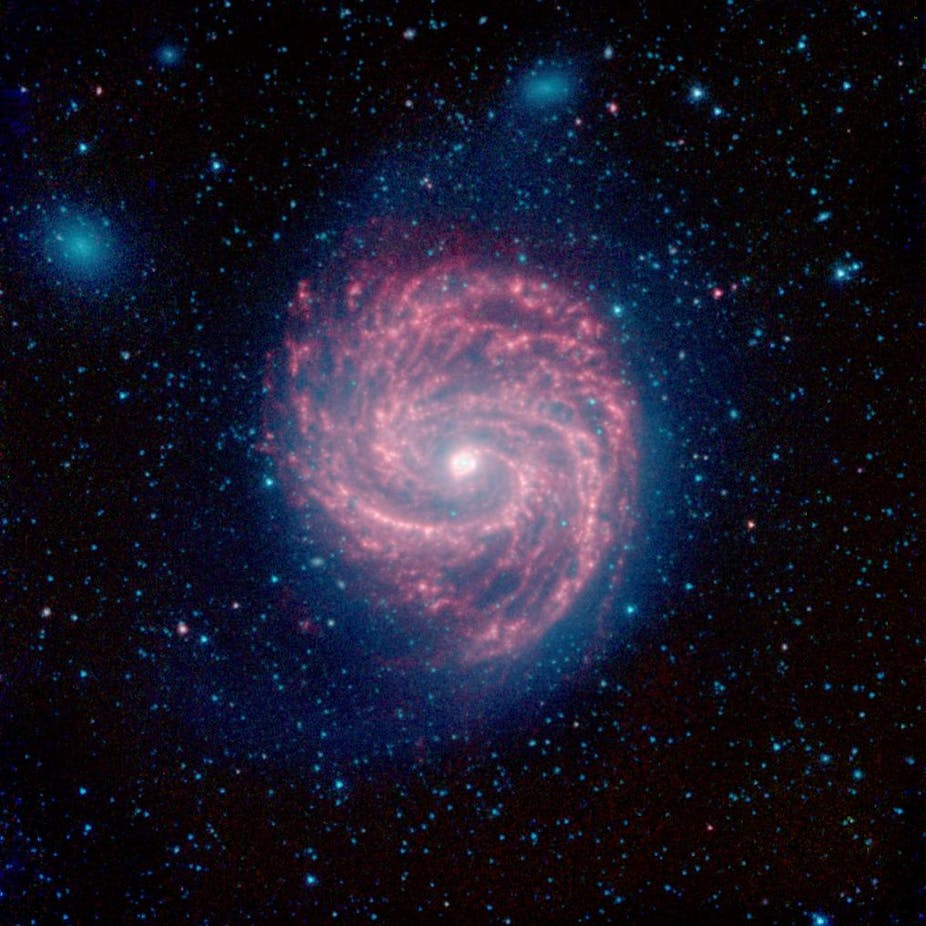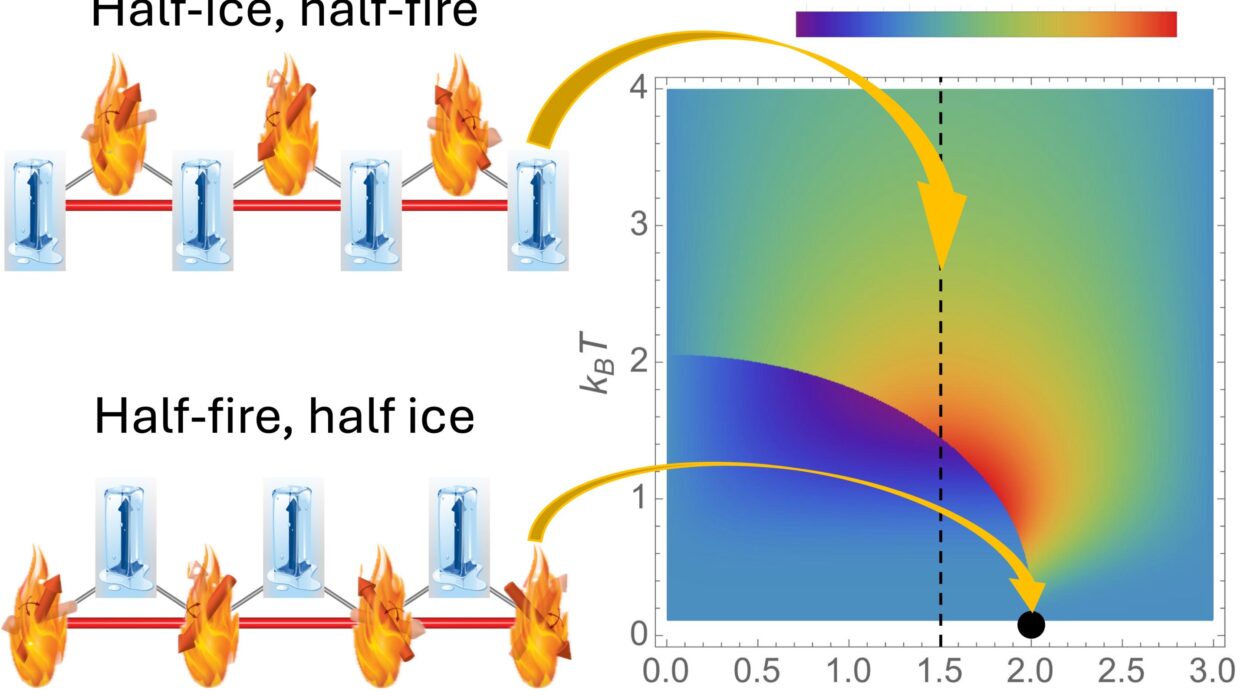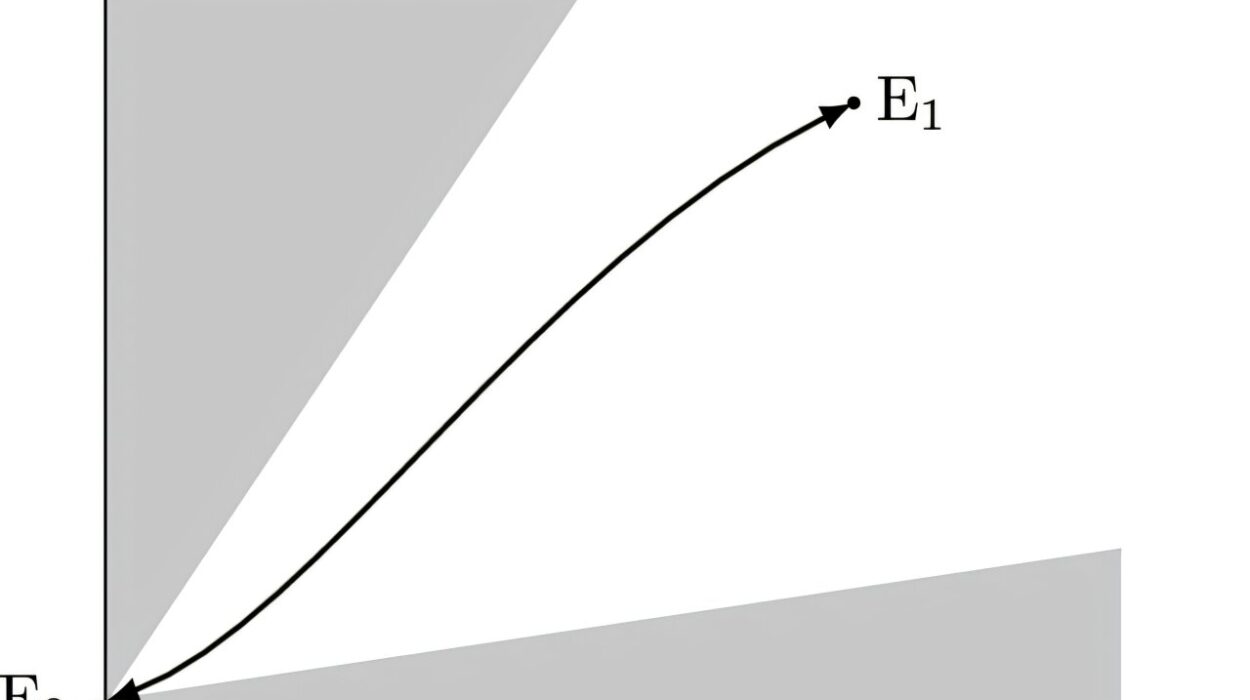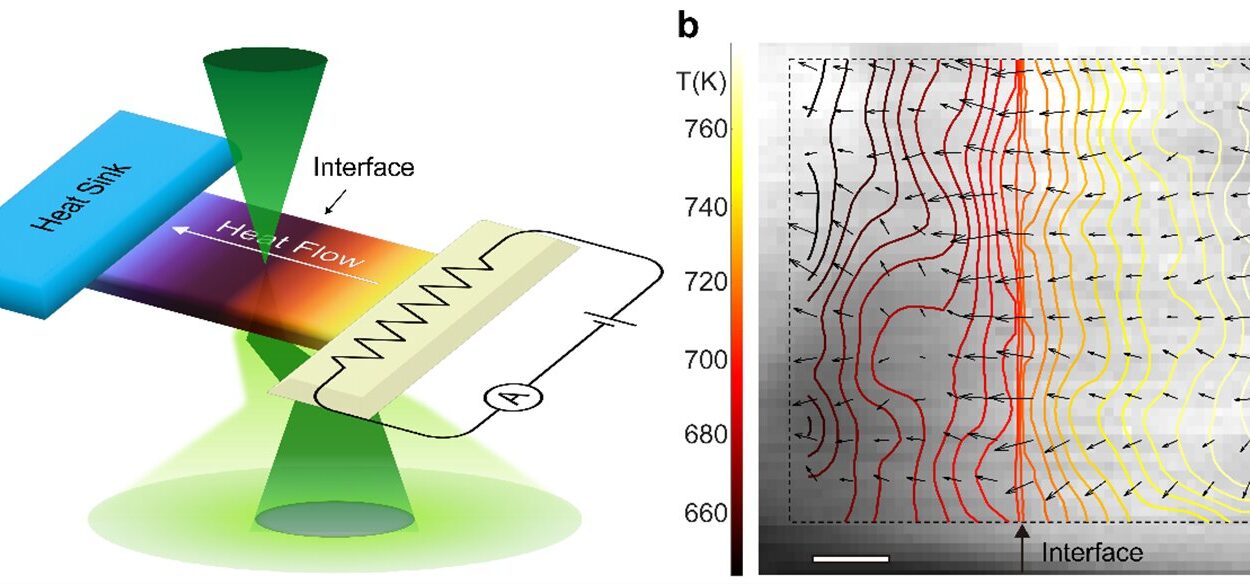Walk outside on a clear day and look around. Trees, birds, buildings, oceans, people—all composed of matter. Our very thoughts and emotions arise from matter in motion, complex patterns of molecules and neurons. And yet, hidden beneath this everyday experience lies one of the greatest mysteries in all of physics: Why does matter exist at all?
This question isn’t philosophical fluff—it’s a razor-sharp, scientific enigma. According to the prevailing laws of physics, the early universe should have created equal amounts of matter and antimatter. But had that happened, matter and antimatter would have annihilated each other, leaving behind nothing but light. And yet, here we are, living in a universe filled with stars, planets, and people, built entirely from matter. Antimatter exists only fleetingly, in laboratories or cosmic rays.
Somehow, something tipped the scales in favor of matter—by the tiniest fraction, one part in ten billion. That sliver of imbalance made everything we know possible. But what caused it? To answer that, we must journey through the origins of the universe, the strange world of particle physics, and the tantalizing clues left behind in cosmic radiation and high-energy collisions.
The Universe’s Birth: Big Bang and the Primordial Soup
Our story begins around 13.8 billion years ago, at the very beginning of time: the Big Bang. In this primeval explosion, space and time erupted into being, bringing with them a searing storm of energy and particles. For the first fraction of a second, the universe was a hot, dense plasma—a quantum soup where particles popped in and out of existence at blistering speeds.
In that inferno, pairs of particles and their mirror opposites—antiparticles—were created together in exact symmetry. For every electron, there was a positron. For every quark, an antiquark. And according to the most elegant theories in physics, there should have been no reason for either side to prevail.
Yet somehow, when the universe cooled enough for particles to stop annihilating each other, a tiny excess of matter remained. Just enough to form atoms, galaxies, and everything within them. This asymmetry, known as baryon asymmetry, is one of the key unsolved problems in cosmology. The term “baryon” refers to particles like protons and neutrons, the building blocks of atoms.
If we could rewind the cosmic clock and watch those first few microseconds play out, we’d see the seeds of everything—if only we understood what caused the imbalance.
Matter vs. Antimatter: Symmetry and Its Violation
To grasp this cosmic conundrum, we need to understand the concept of symmetry in physics. In particle physics, symmetry isn’t just aesthetic—it’s foundational. Symmetries in nature lead to conservation laws, like the conservation of energy or momentum. The laws of physics seem to treat matter and antimatter almost identically, a property known as CPT symmetry (Charge, Parity, and Time reversal).
If the universe were truly symmetric, matter and antimatter should have been created in equal amounts and annihilated completely. But experiments suggest that, under certain conditions, this symmetry is broken—a phenomenon called CP violation.
In 1964, physicists James Cronin and Val Fitch made a surprising discovery while studying the decay of neutral kaons (particles made of a quark and an antiquark). They found that these particles violated CP symmetry: they decayed differently than their antiparticle counterparts. This groundbreaking experiment won them the Nobel Prize and pointed to the tantalizing possibility that the laws of physics might favor matter—just slightly.
More recently, similar asymmetries have been observed in particles called B-mesons. These subtle differences suggest that nature does not treat matter and antimatter entirely the same, and this might help explain the imbalance. But there’s a problem: the known CP violations in the Standard Model of particle physics are too weak. They’re not nearly enough to account for the massive difference we observe in the universe.
So the mystery deepens: What other mechanisms might be at work?
The Role of the Higgs Field and Mass Generation
While CP violation offers one clue, another vital piece of the puzzle lies in the Higgs field—the invisible force field that permeates the universe and gives particles their mass. Without mass, matter wouldn’t clump together to form anything. The Higgs field, confirmed in 2012 with the discovery of the Higgs boson at CERN, plays a crucial role in shaping the properties of particles.
In the early universe, as it cooled and expanded, the Higgs field “switched on” in a phase transition, similar to how water freezes into ice. During this transition, particles acquired mass, and the structure of the universe began to take form.
Theoretical physicists speculate that this phase transition could have created conditions for matter-antimatter asymmetry. Certain extensions of the Standard Model, such as electroweak baryogenesis, suggest that the Higgs field could interact with new, undiscovered particles in a way that generates CP violation strong enough to explain the matter dominance.
But these ideas remain theoretical. Despite their mathematical beauty, they haven’t yet been confirmed by experiment.
Supersymmetry and the Quest for New Physics
The Standard Model of particle physics is incredibly successful—but incomplete. It doesn’t include gravity, it can’t explain dark matter, and it falls short in accounting for the matter-antimatter imbalance. This has led physicists to search for new physics beyond the Standard Model.
One compelling candidate is supersymmetry (SUSY), a theory proposing that every known particle has a heavier partner: a “superparticle.” These partners could introduce new sources of CP violation and alter the early universe’s dynamics in ways that favor matter.
Supersymmetric particles might also serve as dark matter candidates, solving two problems at once. But despite extensive searches at the Large Hadron Collider (LHC), no supersymmetric particles have yet been found. Still, the theory remains attractive, and future colliders may probe deeper into this terrain.
Even more exotic are theories involving extra dimensions, string theory, and hidden sectors—realms of particles and forces that interact weakly with our visible universe. Any of these might harbor the key to understanding why matter triumphed over antimatter.
Leptogenesis: Neutrinos and the Matter Mystery
Another intriguing path to solving the mystery involves the neutrino—a ghostly, nearly massless particle that streams through your body by the trillions every second. Neutrinos barely interact with matter, making them notoriously difficult to study. Yet they may hold the answer to why matter exists.
In a theory called leptogenesis, the early universe produced heavy, unstable neutrino-like particles. As these particles decayed, they violated CP symmetry and created an excess of leptons over antileptons (leptons include electrons and neutrinos). This lepton asymmetry was then converted into a baryon asymmetry through a process known as the sphaleron transition, mediated by high-energy interactions predicted by the Standard Model.
If confirmed, leptogenesis would elegantly explain the matter-antimatter imbalance using known physics and plausible extensions. But like so much in modern cosmology, the evidence remains indirect. Ongoing experiments in neutrino physics, like the Deep Underground Neutrino Experiment (DUNE) and Japan’s Hyper-Kamiokande, aim to test these ideas.
Cosmic Clues: The Afterglow of the Big Bang
To investigate these deep questions, scientists turn to the oldest light in the universe—the cosmic microwave background (CMB). This faint glow, discovered in 1965, is the afterglow of the Big Bang, stretched and cooled over billions of years.
Detailed measurements of the CMB, particularly by satellites like WMAP and Planck, reveal an astonishingly precise snapshot of the early universe. Tiny fluctuations in temperature and polarization encode information about the density, composition, and evolution of the cosmos.
By comparing these observations to simulations, physicists can constrain theories of baryogenesis. So far, the data confirms that matter far outweighs antimatter, but the precise origin of the imbalance remains elusive.
Other cosmic clues include the relative abundances of light elements like helium and deuterium, forged in the first minutes of the universe. These “fossil records” help test models of the early universe and limit how much matter-antimatter annihilation could have occurred.
Could Antimatter Galaxies Exist?
A wild but persistent idea suggests that antimatter wasn’t eliminated entirely—but segregated. What if distant parts of the universe contain galaxies made of antimatter? If so, occasional collisions between matter and antimatter regions should produce intense gamma-ray bursts, which we’ve never observed. The lack of such signatures strongly implies that our observable universe is matter-dominated.
Moreover, cosmic rays—high-energy particles from space—contain far fewer antimatter particles than would be expected if antimatter galaxies existed. These findings reinforce the conclusion that the universe overwhelmingly consists of matter, not a balanced mix.
Philosophical Reflections: Contingency and Necessity
At this point, we must pause and consider whether the asymmetry that gave rise to matter is a deep necessity of nature—or a cosmic accident. Is there some hidden principle that requires matter to dominate? Or did the universe simply “roll the dice” in its first moments, and we happen to live in the outcome where matter won?
This is where physics brushes against the edges of philosophy. In a multiverse—a hypothetical collection of many universes with different physical laws—there might be countless realms where matter and antimatter canceled out. Only in the rare few where matter survived could life, planets, and observers arise. This is the anthropic principle: we see a matter-filled universe because only such a universe permits us to exist.
While this idea is intellectually intriguing, it’s not satisfying to many physicists, who seek a more predictive, testable explanation. The search continues for a principle or mechanism that determines the matter asymmetry, not just as a statistical fluke but as a necessary consequence of deeper laws.






